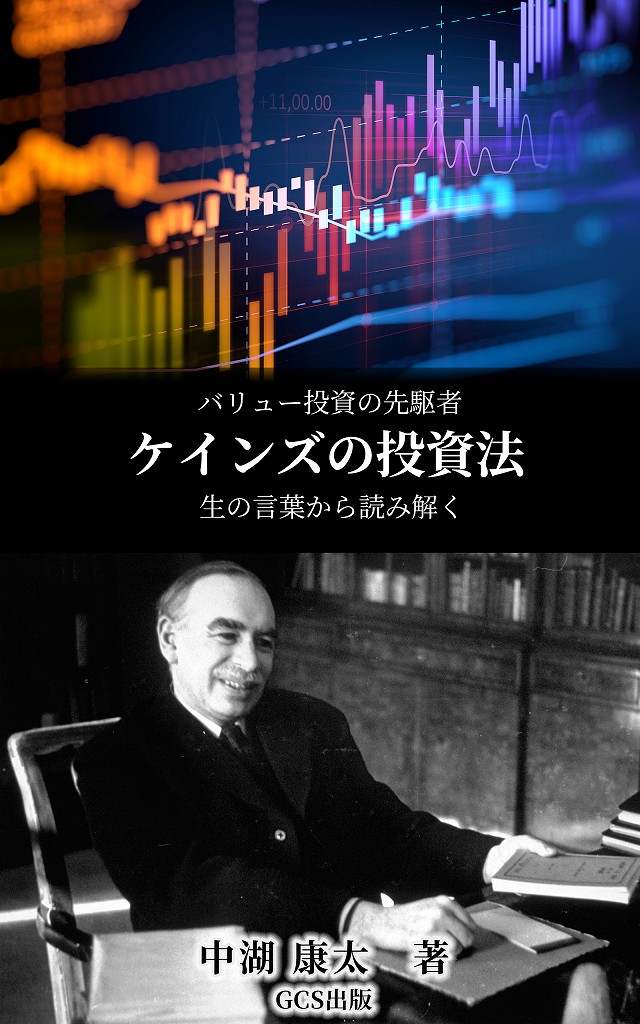相場変動による下落と本源的価値の棄損は異なる
ケインズは、前述したように1924年初頭から1946年に死去するまで、プロヴィンシャル保険会社の資産運用に関わっている。同社のマネジング・ディレクターであるフランシス・スコットとしばしば書簡を交わしている。投資会社においてはしばしばあることだが、両者には意見の相違があった。
(F.C.スコットへの書簡 1938年6月7日)
親愛なるフランシス、
時間ができましたので、5月2日にもらった手紙に詳しく返信します。
I
あいまい怪しげ銘柄による失敗・しくじり(Stumers)
運用のパフォーマンスについて事後評価(post mortem)することは重要です。大切なのは多くの銘柄からなる投資ポートフォリオのパフォーマンスを台無しにする失敗・しくじり(stummers)をしないことです。それらは、価値の下落が単に相場変動によるものでなく、本源的な資本価値の毀損によるものです。これは、相場変動にともなう株価変動とは異なり、その後の回復が望めない類のものです。相場変動に伴う価値の変動と、銘柄選択の誤りから生ずる価値の減少は区別しなければなりません。
この点において、我々の投資運用は成功をおさめているといえるでしょう。私たちの銘柄リストにも、失敗・しくじりといえるものが含まれます。しかし、そこへの投資額は大きなものではありません。将来の運用に、その失敗した銘柄のリストを作り、なぜその失敗が生じたかを記録することは、非常に重要なことです。以下が、私のリストです。オメスティ、ペタース・プリフェレンス、ブリティッシュ・アンド・ドミニオン・フィルム、カルボ・プラスター、アンフィールド・ローリング・ミル、グランド・ユニオン・カナル、サウス・アフリカン・トルバナイト、ユニバーサル・ラバー・ペイヴャ、モーゲージ・バンク・オブ・チリなどです。但し、米国株は含んではいません。何故なら、現状においてその成否を区別することは難しいからです。
お気づきのように、これらはすべてスペシャルティーといえるもので、かなりあいまい怪しげなものです。ほとんど個人的なアドバイスに基づいて購入したものです。オメスティはトラウトンによるもの、カルボ、アトルバナイトはフォークによるもの、アンフィールド、グランド・ユニオン・カナルはブレットによるものです。経験が示すところは、この種の個人的、パーソナルな推奨による銘柄への投資は、長期的にみれば失敗する傾向がある、ということです。アンフィールド・ローリング・ミルをこのリストに含めるべきかどうかについては、確かではありません。初期の困難を乗り切ることができるかどうか、現状では不明だからです。一方、ハンターの推奨で購入したテクスタイル株はリストに含めるべきかもしれません。というのも、産業が再びピークになっても、十分回復するかどうか疑わしいからです。
インデックスとの比較が重要
もう一つの検証すべき点は、代表的なインデックスとの比較です。市場がスランプに陥った時のバリュエーションは、特に株式を含まない投資方針の評価に過度に厳しいものになる傾向があります。投資サイクルを一巡する過程で、インデックスを満足いく程度に上回る投資をしていれば心配はないわけです。つまり、失敗・しくじりを避け、インデックスを上回るパフォーマンスを出していれば、長期的には、文句ないわけです。
証券の上下の変動を計算することに集中する現代の慣習は、投資期間を平均してパフォーマンスを生み出すという投資方針の本来の目的の邪魔になりがちです。保険方針においても、それは行われています。しかし、投資(保険というべきか?)方針は、時間的にはおなじ位置にあるが、場所的には違うところにある様々な事柄を平均化することにあります。時を平均化することに成功した投資方針は、場所の平均化に成功した保険方針と同様に良い結果をもたらすものです。そして、一つ以上のものを平均化するしっかりした方針から乖離すべきではありません。それは、保険方針において、特定の場所で大きな損失を被ることを避けることと同じです。
(続く)
by Kota Nakako
2025/07/21
To F.C. Scott, 7 June, 1938
My dear Francis,
I now have time to reply in detail to your letter of May 2.
I
It is important in conducting a post mortem to be sure what is one’s test of success. One important test is the avoidance of ‘stumers’ with which many investment lists are disfigured. I mean by this definite mistake where the fall in value is due not merely to fluctuations, but to an intrinsic loss of capital There are in an altogether different category from fluctuating securities, since there is no particular reason to expect a subsequent recovery. There is apt to be great confusion of mind between depreciation arising out of fluctuations and depreciation arising out of serious mistakes in the choice of individual securities.
On this test I think we can claim very good success. Our list includes a proportion of the above so of mistake, but the amount of capital involved is not large. It is particularly useful for future guidance to make a list of these and remember how they arose. The following is my list, in chich I have not attempted to include Americans since it is particularly difficult at the present time to analyse them accurately from this point of view: – Omes; Petters Preference; British and Dominions Film; Carbo Plaster; Enfield Rolling Mills; Grand Union Canal; South African Torbanites; Universal Rubber Paviors; Mortgage Bank of Chile.
You will notice that these are practically all specialities and rather obscure concerns, mostly bought on private advice. Omes was due to Trouton; Carbo Plaster and south African Torbanite to Falk; Enfield Rolling Mills and Grand Union Canal to Brett. I am sure experience shows that private and personal recommendations of this class of security tend to turn out wrong in the long run. I am not quite sure whether Enfield Rolling Mills is justifiably included in that list, since it may succeed in getting over its preliminary difficulties. But perhaps our holding of Textiles bought on Hunter’s advice ought also to be included, since one rather doubts whether they will recover fully, even when industry is again at a peak.
The other chief test must be, I would urge, against representative index numbers. A valuation at the bottom of the slump, tends to bring out an unduly unfavourable result against an investment policy which on the whole avoids equities; since it allows nothing for the next egg in hand arising out of the fact that such a valuation is assuming in effect that one has purchased a large volume of equities at bottom prices. As long as you are beating the index number by a satisfactory percentage on the round journey there is, I am sure, not too much to worry about. For provided that you are avoiding stummers and beating the index number, you are bound to do brilliantly in the long run.
The modern habit of concentrating on calculations of appreciation and depreciation tends to interfere with what should be the proper habit of mind that the object of an investment policy is averaging through time. Insurance policy is, of course, doing that a little bit; but on the whole investment [insurance?] policy is averaging over a number of items which are in the same position in time, but in different positions in place. Investment policy which is successful in averaging through time will produce the same good results as insurance policy which is successful in averaging through place; and one must not be deflected from the sound principles of that kind of averaging any more than one must be deflected in an insurance policy by a heavy loss in a particular place.















